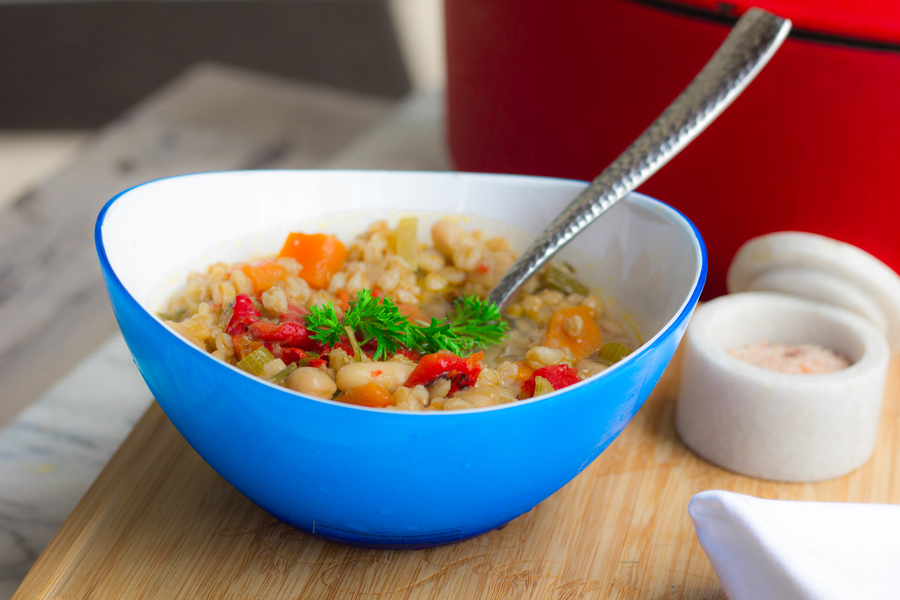 If you have not yet started to cook with ancient whole grain farro, this Tuscan farro minestrone soup recipe is a good place to start. A meal-in-a-bowl, it’s hard to go wrong with minestrone!
Thanks to the farro, this version is more filling than classic minestrone recipe made with pasta. And trust me, if you happen to have a 17-year old teenage son who works out just about every day then you need hearty and filling recipes 😉 Not only is farro more filling than pasta, it’s also a lot more nutritious….
If you have not yet started to cook with ancient whole grain farro, this Tuscan farro minestrone soup recipe is a good place to start. A meal-in-a-bowl, it’s hard to go wrong with minestrone!
Thanks to the farro, this version is more filling than classic minestrone recipe made with pasta. And trust me, if you happen to have a 17-year old teenage son who works out just about every day then you need hearty and filling recipes 😉 Not only is farro more filling than pasta, it’s also a lot more nutritious….
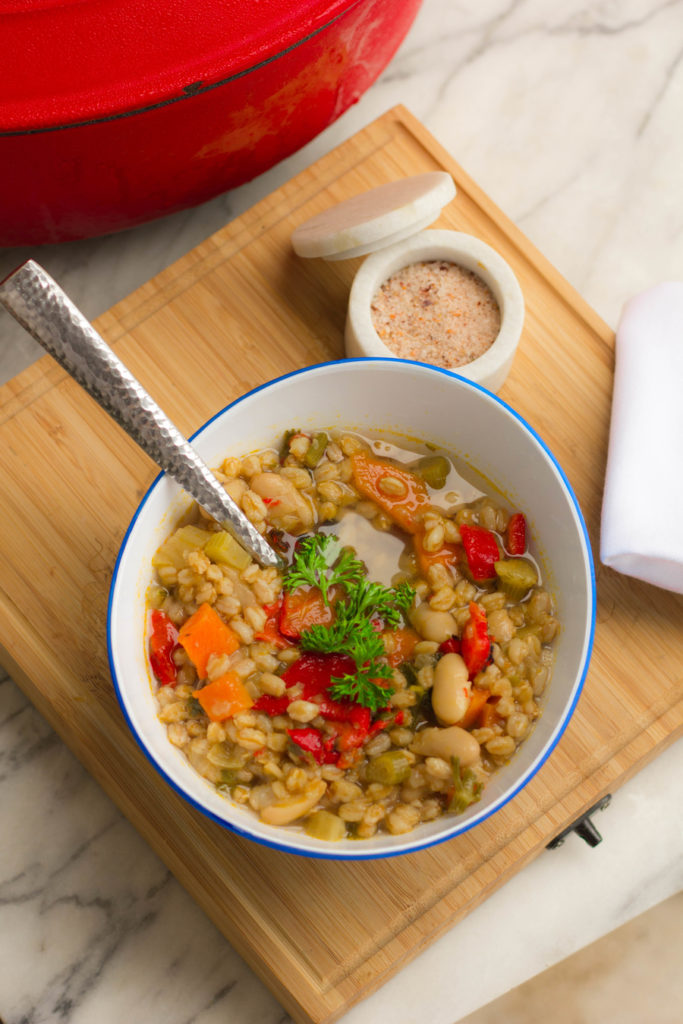 What is Farro?
What is Farro?
Farro looks a lot like wheat berries— it’s a small light brown grain with a visible bran and it makes a great alternative to rice, quinoa, buckwheat, barley, spelt or other ancient grains. A savory “old world grain”, farro has a nutty earthiness and satisfying chew that is often used in soups, salads and even dessert. And nobody says you can’t have a bowl of farro with fresh berries, almond milk and a drizzle of raw honey for breakfast either!
Is Farro Gluten-Free?
Farro is a form of wheat and therefore NOT gluten free. However, in comparison to wheat, farro is a low-gluten whole grain that can often be tolerated in small amounts even in individuals with non-celiac gluten sensitivity (note: those with celiac disease should not consume farro.)Health Benefits of Farro
Farro has more fiber than just about any other whole grain. Just one cup of farro can provide a whopping 20% of the daily recommended fiber intake! As we discuss extensively in our book, fiber is an anti-inflammatory substance that plays a critical role in maintaining good health. And one type of fiber in farro called resistant starch is particularly helpful for weight loss (Read more about the benefits of resistant starch.) The fiber in farro also plays a very important role in maintaining a healthy gut. Oligosaccharides are one particular type of fiber found in farro that function as a prebiotic in the colon. The bacteria that feed on oligosaccharides produce many beneficial substances, including short-chain fatty acids (SCFAs) and certain B-vitamins. Additionally, there is even some evidence that they may promote further absorption of some minerals that have escaped the small intestine, including calcium and magnesium. In addition to fiber, farro is also an excellent source of plant protein, antioxidants, phytonutrients (including lignans), B vitamins, zinc and iron.Buying the Healthiest Farro
The most nutritious farro (and the one I use in my Tuscan farro minestrone soup recipe below) is whole, unpearled farro. However, if you head to the supermarket to pick up farro and you don’t know what you are looking for then there is a good chance you will end up grabbing pearled farro. In the United States, farro is nearly always sold pearled, which means it needs less cooking time than whole, unpearled farro or semi-pearled farro, which is more common in Italy. However, pearled farro is a refined grain that has had the fiber and nutrient-rich bran removed. Removing the fiber defeats a large large part of the reason to eat farro in the first place! Look for whole, unpearled farro in the bulk foods section of well-stocked natural grocers and health food stores. Bob’s Red Mill also sells a packaged organic whole, unpearled farro (see photo below.) If you can’t find whole, unpearled farro then your next best option is semi-pearled farro.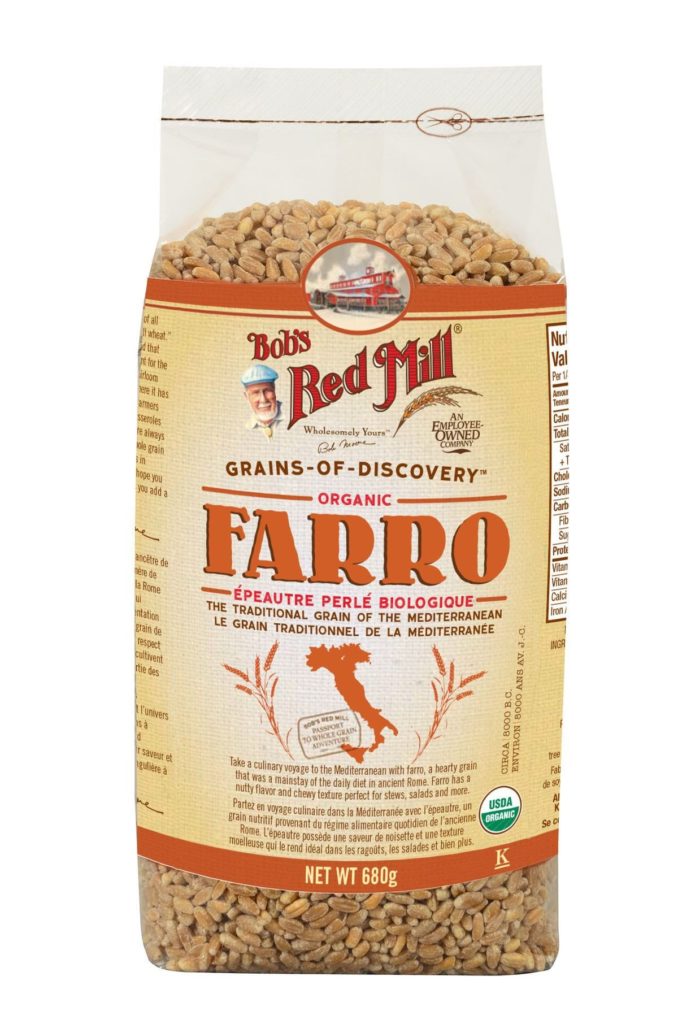

Do Italians REALLY Eat Farro Minestrone?
Yes! Although whole grain farro might sound like some new age hippie food, it’s actually been a part of authentic Italian cuisine for centuries. A rustic staple grain, farro is believed to have sustained the Roman legions. In fact, it was on a family trip to Rome, Italy last year where I had my first farro minestrone soup recipe. (I did a blog post HERE on what I learned after eating REAL Italian Meals for a Week!) But now farro is moving from rustic Italian tables into fashionable restaurants not only in Tuscany and northern Italy (where it seemed to be everywhere on menus!), but also in the United States, particularly on the West and East Coasts. According to the New York Times farro dishes are now regularly on the menus at high-profile restaurants like Union Square Cafe in Manhattan, Zuni Cafe in San Francisco, Chez Panisse in Berkeley, Calif., and Olivetto in Oakland, Calif.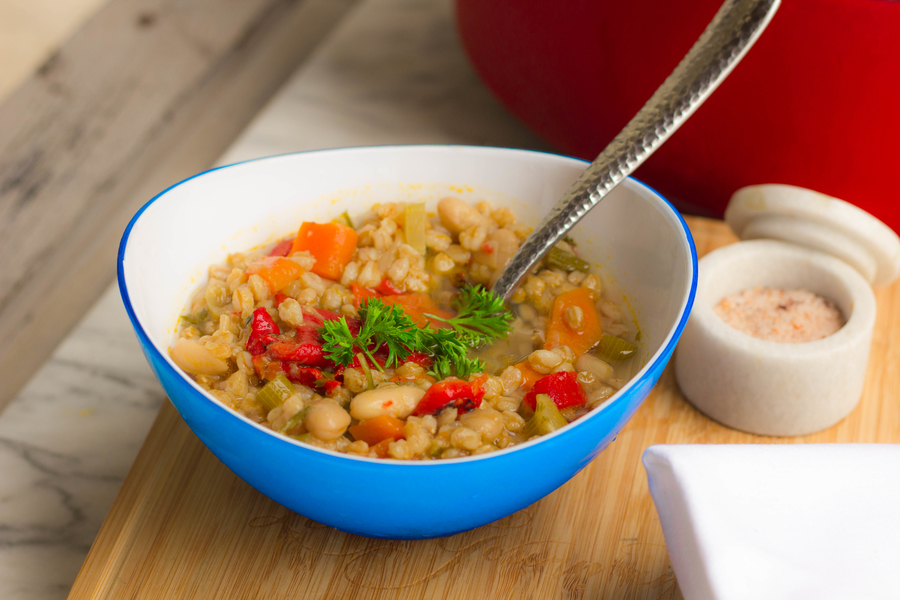
For those of you with food allergies and food sensitivities, it’s helpful to know this Tuscan farro minestrone soup recipe meets the following dietary restrictions:
Dairy Free/ Egg Free/ Nut Free / Soy Free/ Vegetarian / Vegan
Tuscan Farro Minestrone Soup
Tuscan farro minestrone soup recipe uses whole grain farro instead of pasta for a healthier option. Farro has a great chewy texture and subtle nutty flavor that makes it a perfect match for minestrone!
- Prep Time: 20 minutes
- Total Time: 40 minutes
- Yield: 4 to 6 1x
Ingredients
- 3 tablespoons extra virgin olive oil 1 cup onion (finely chopped1 cup carrots, finely chopped1 cup fennel, finely chopped4 cloves garlic, finely chopped3/4 teaspoon Himalayan pink salt, plus more to taste1 cup uncooked farro 4 cups vegetable broth1 bay leaf1 jar (12-ounces) organic roasted red peppers, rinsed, drained and chopped1 can (15 ounces) diced tomatoes, drained1 can (15 ounces) BPA-free cannelloni beans, rinsed and drained1/4 cup chopped fresh parsley1/4 cup lemon juice Clean Cuisine “Nut Cheese” (see notes), optional)
Instructions
- Heat a large Dutch oven over medium heat. Add the oil and continue to heat until hot. Add the onions, carrots, celery, fennel and salt. Cook, stirring often with a wooden spoon, for 4 minutes, or until the vegetables are beginning to soften.Add the farro and stir, combining it with the vegetables and coating it in the oil. Add 3 cups of water, then stir in the broth and bay leaf. Bring to a boil, then reduce the heat to medium-low and simmer for 12-minutes.Stir in the roasted red peppers, tomatoes and beans and continue to simmer for an additional 25 minutes. Remove and discard the bay leaf. Remove from the heat and stir in the lemon juice and parsley. Ladle soup into serving bowls, drizzle with olive oil and sprinkle with Clean Cuisine “Nut Cheese”, if desired.
Last Step! If you loved our recipe, leave us a review below. This helps future recipe makers and ensures continued high-quality recipes for years to come!
Notes
Clean Cuisine “Nut Cheese”: A plant-based alternative to Parmesan cheese, “nut cheese” takes less than 10 minutes to make. Click HERE for the recipe.
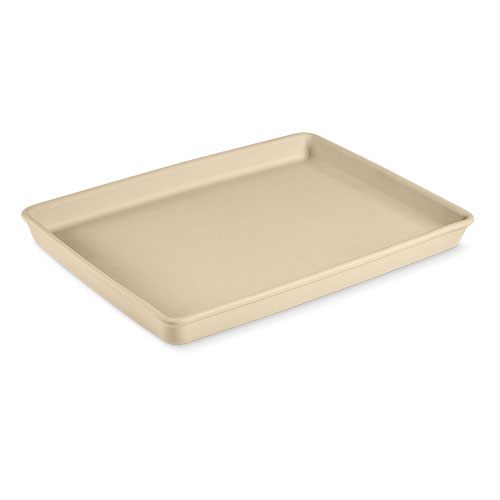
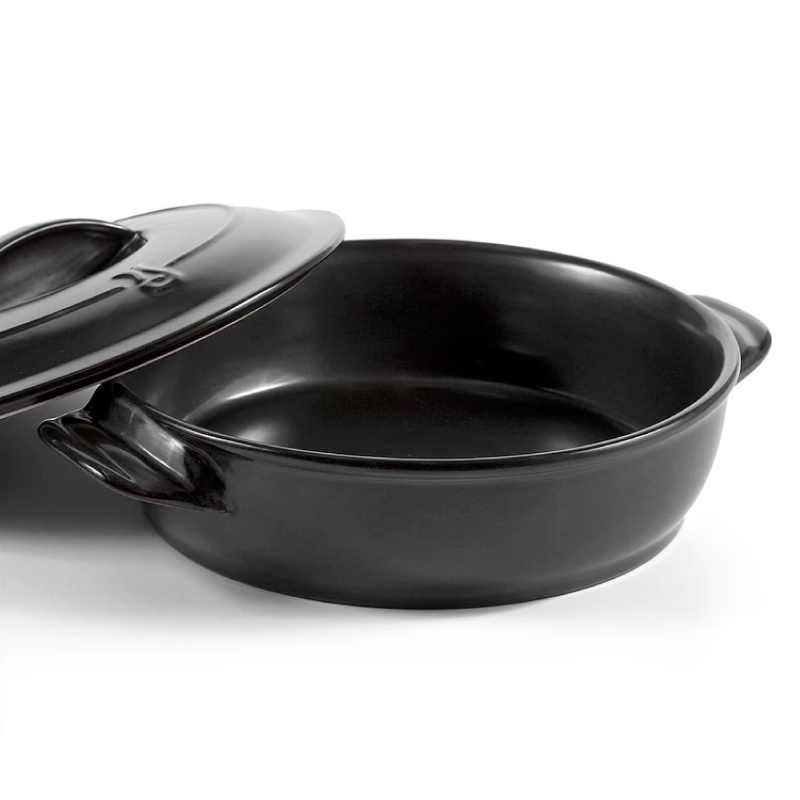

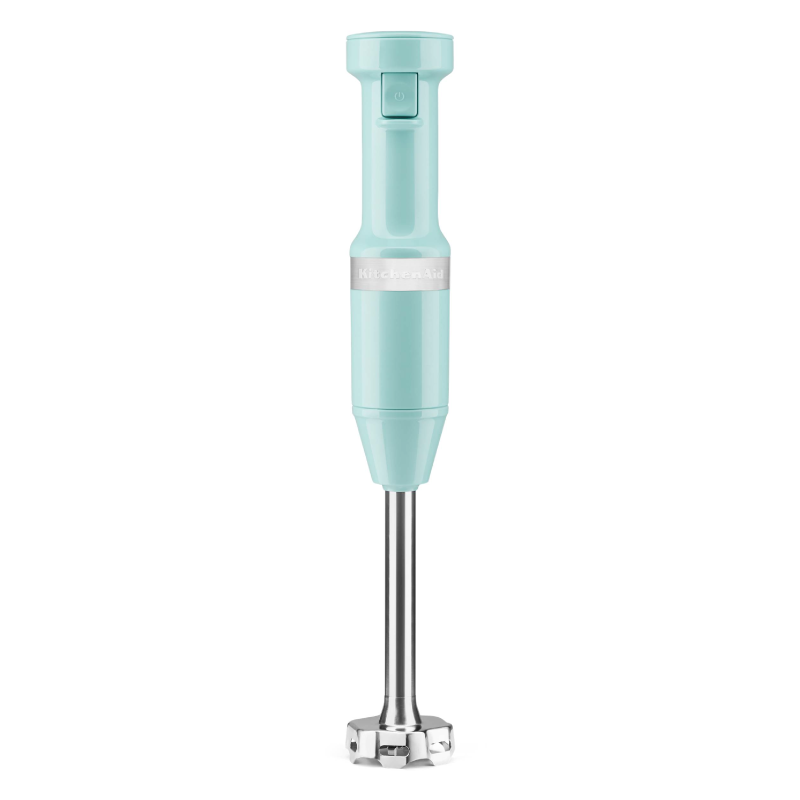
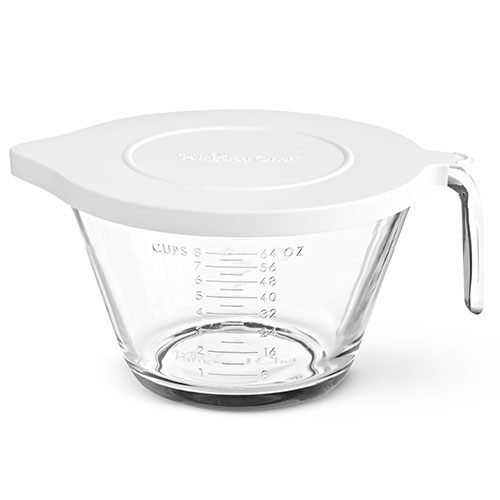

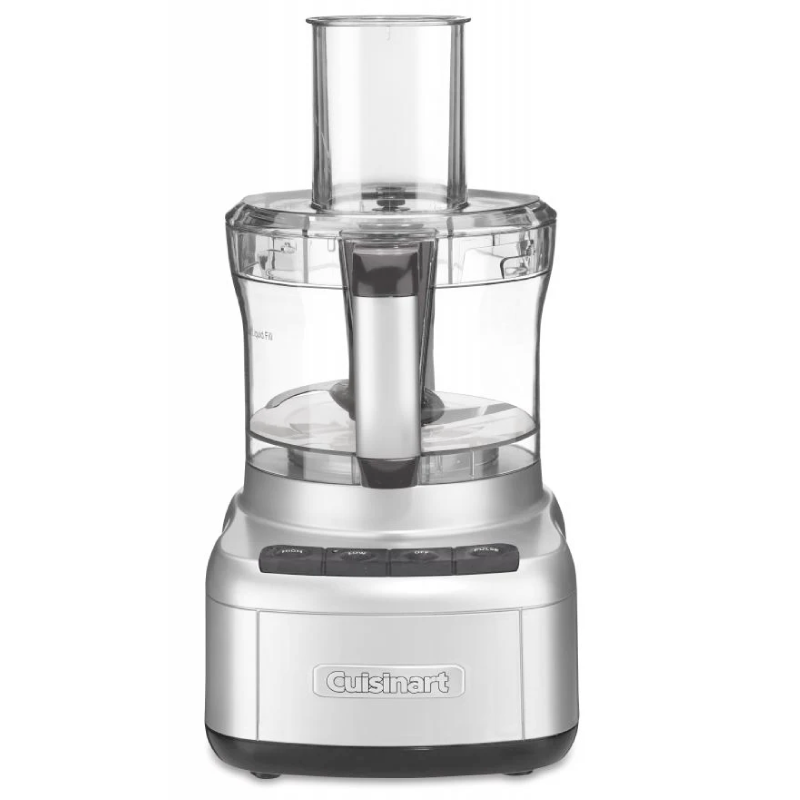
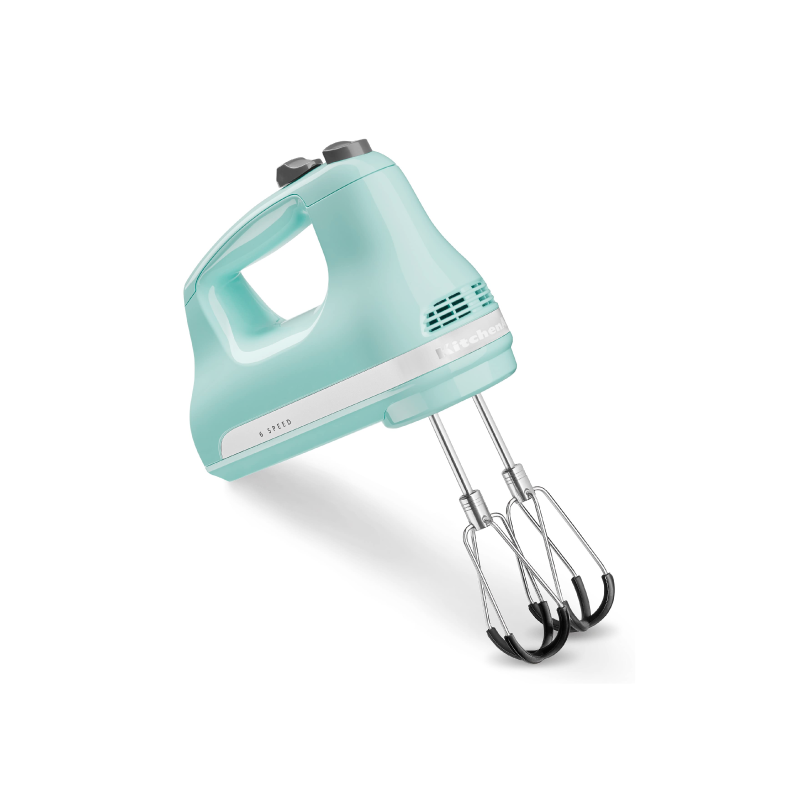
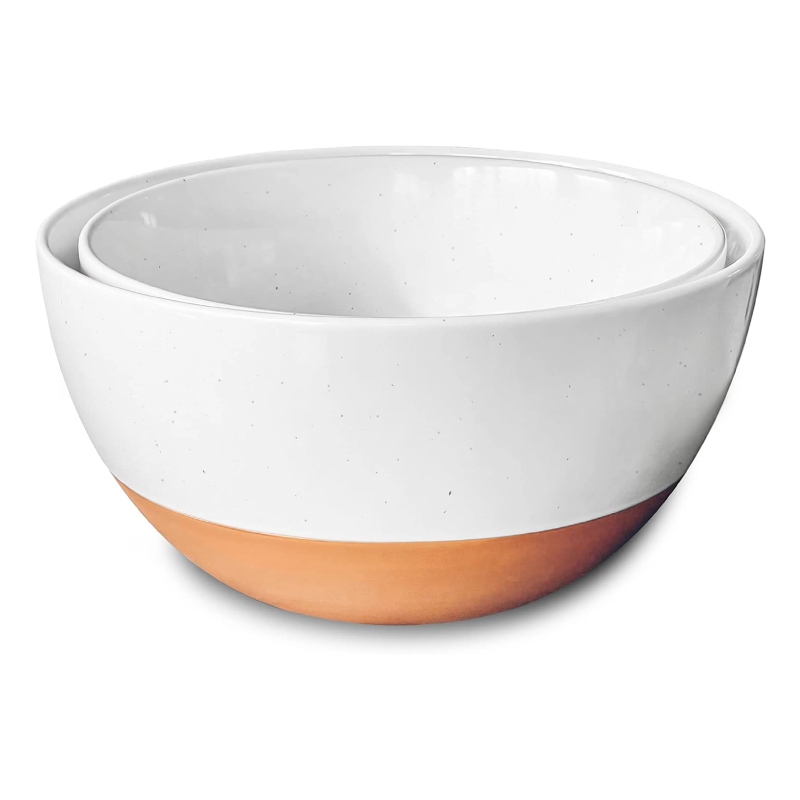





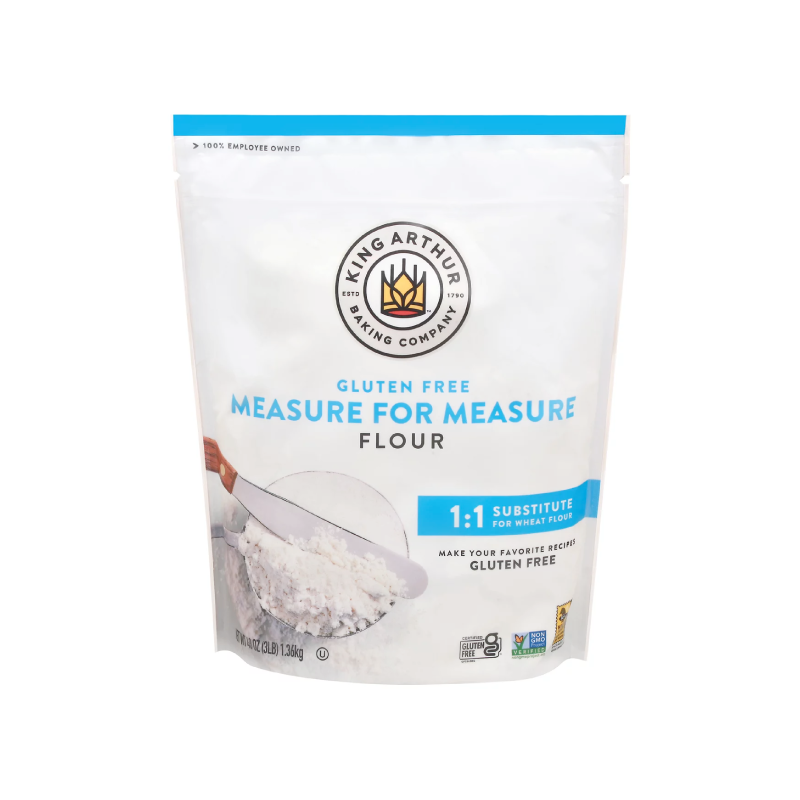
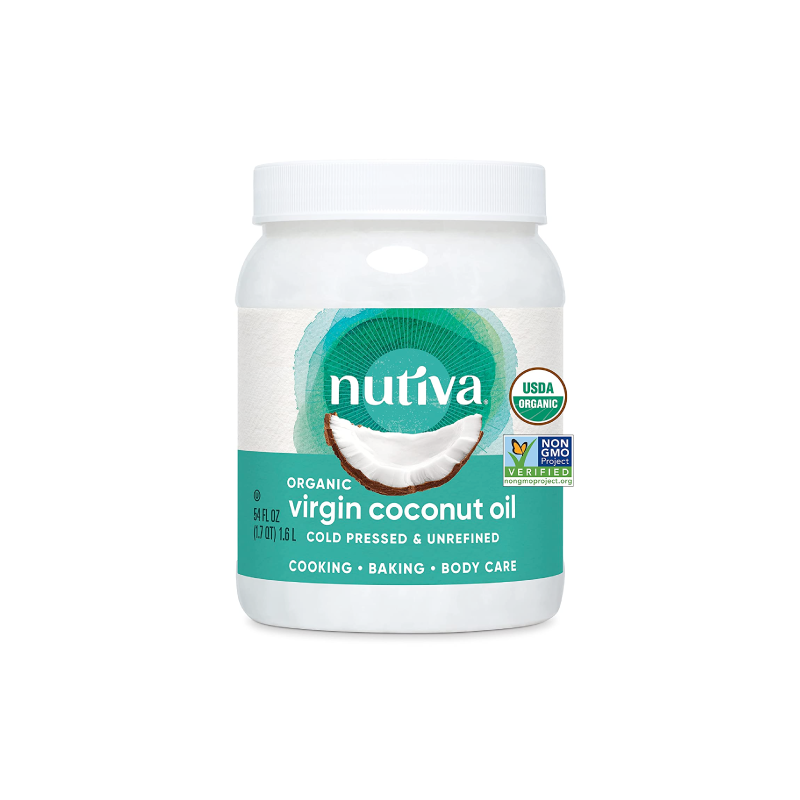
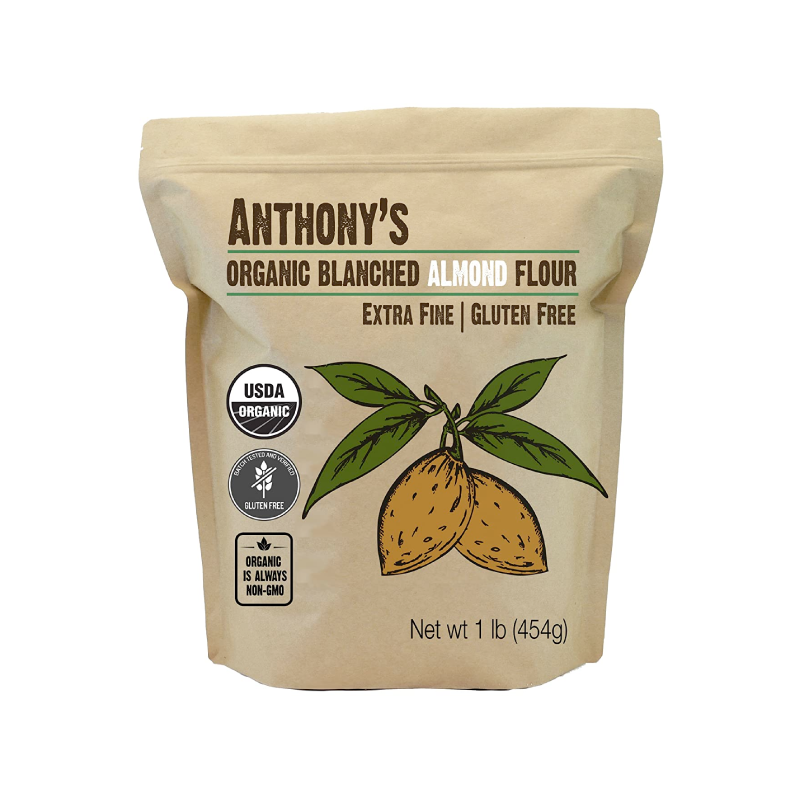
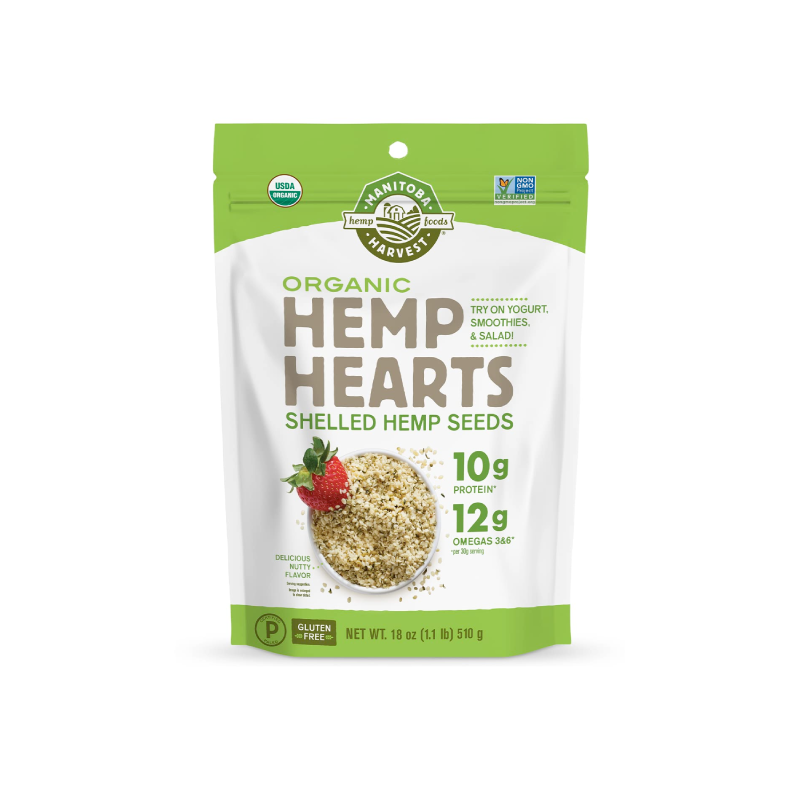
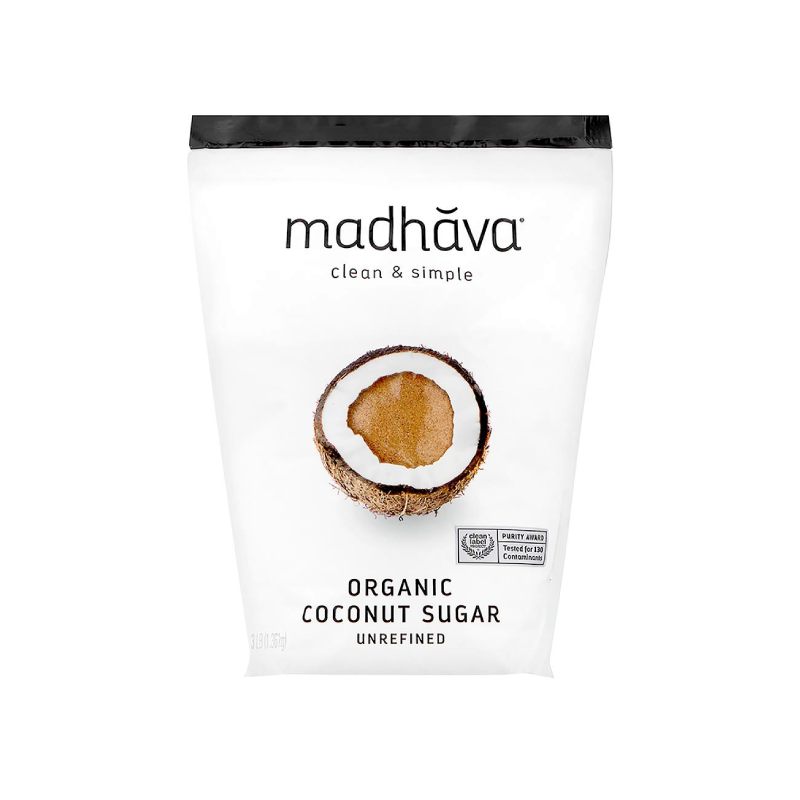

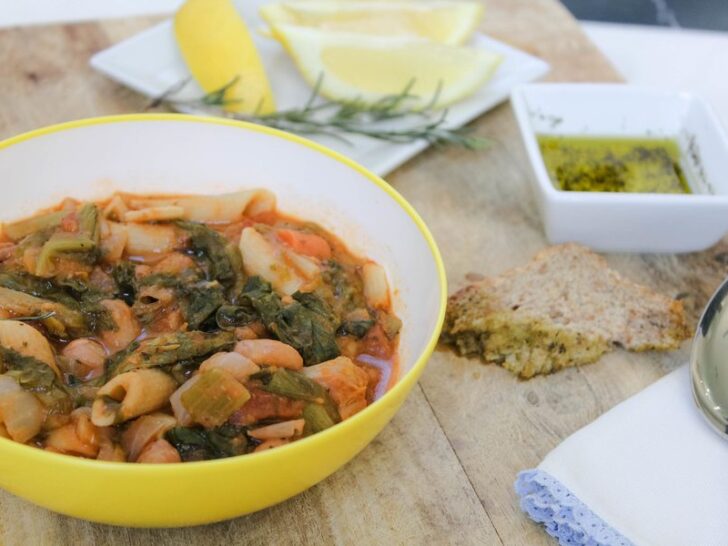
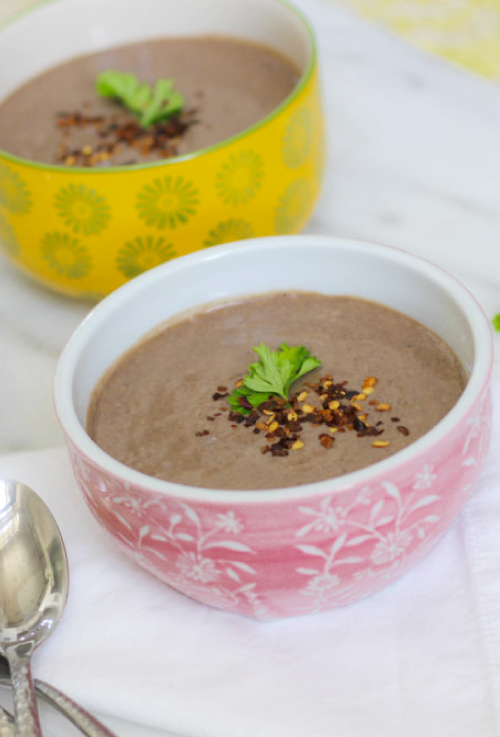
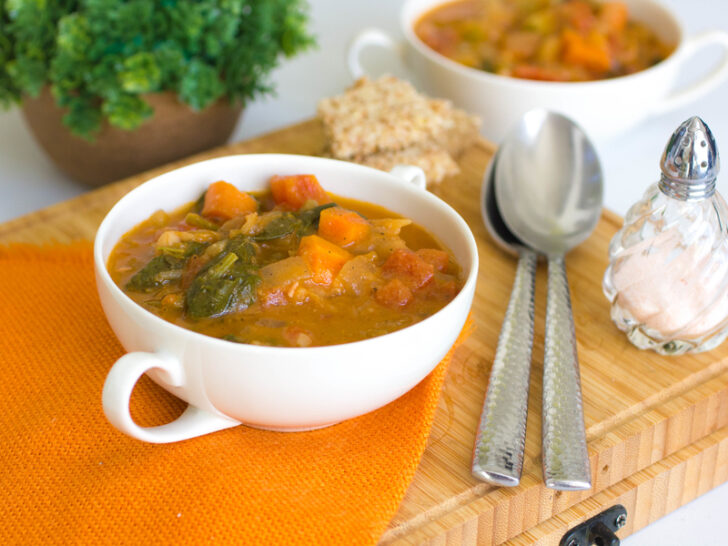
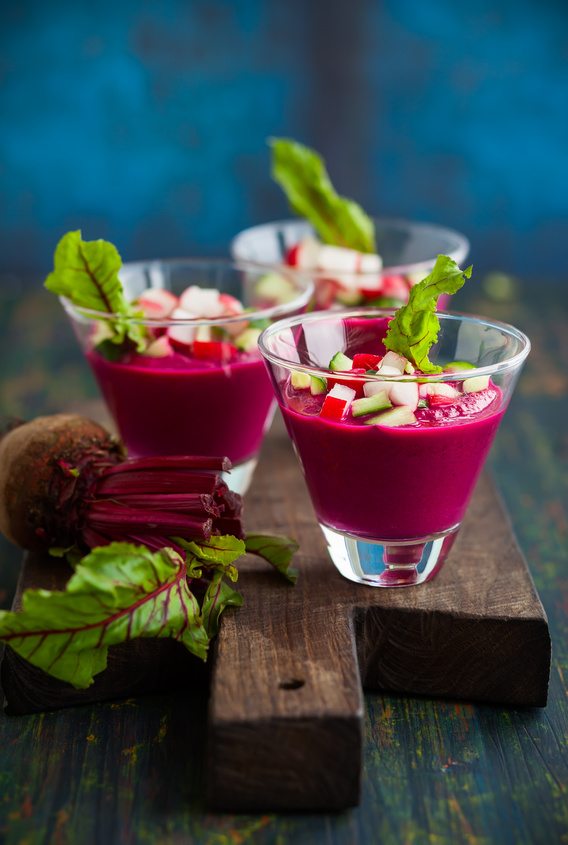



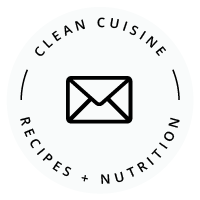
Lynn Ridley
Monday 23rd of July 2018
I do not like fennel, and it is featured in a lot of recipes I would otherwise like. What would be a good sub?
Ivy Larson
Tuesday 24th of July 2018
Hi Lynn, that's a great question! The flavor of Fennel is not easy to replicate, but I think the best way to reproduce the texture is to use celery. Please let me know what you think if you try it...